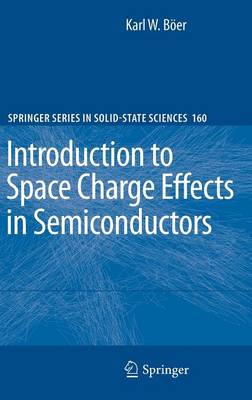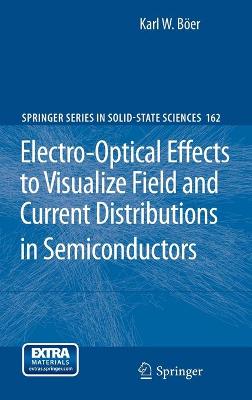Springer Series in Solid-State Sciences
2 primary works
Book 160
This short Introduction into Space Charge E?ects in Semiconductors is designed for teaching the basics to undergraduates and show how space charges are created in semiconductors and what e?ect they have on the el- tric?eldandthe energybanddistributioninsuchmaterials,andconsequently on the current-voltage characteristics in semiconducting devices. Such space charge e?ects were described previously in numerous books, fromtheclassicsofSpenkeandShockleytothemorerecentonesofSeegerand others.Butmanymoredetailedinformationwereonlyavailableintheoriginal literatureandsomeofthemnotatall.Itseemstobeimportanttocollectallin a comprehensive Text that can be presented to students in Physics, Electrical Engineering, and Material Science to create the fundamental knowledge that is now essential for further development of more sophisticated semiconductor devices and solar cells. This book will go through every aspect of space charge e?ects and - scribe them from simple elementaries to the basics of semiconductor devices, systematically and in progressing detail.
For simplicity we have chosen this description for a one-dimensional se- conductorthatpermitsasimpledemonstrationoftheresultsgraphicallywi- out requiring sometimes confusing perspective rendering. In order to clarify the principles involved, the book starts with a hy- thetical model, by assuming simple space charge distributions and deriving their e?ects on ?eld and potential distributions, using the Poisson equation. Itemphasizestheimportantsignrelationsoftheinterreactingvariables,space charge, ?eld, and potential (band edges). It then expands into simple semiconductor models that contain an abrupt nn-junction and gives an example of important space chargelimited currents, + as observed in nn -junctions.
For simplicity we have chosen this description for a one-dimensional se- conductorthatpermitsasimpledemonstrationoftheresultsgraphicallywi- out requiring sometimes confusing perspective rendering. In order to clarify the principles involved, the book starts with a hy- thetical model, by assuming simple space charge distributions and deriving their e?ects on ?eld and potential distributions, using the Poisson equation. Itemphasizestheimportantsignrelationsoftheinterreactingvariables,space charge, ?eld, and potential (band edges). It then expands into simple semiconductor models that contain an abrupt nn-junction and gives an example of important space chargelimited currents, + as observed in nn -junctions.
Book 162
Electro-Optical Effects to Visualize Field and Current Distributions in Semiconductors
by Karl W. Boeer
Published 26 February 2010
This monograph of Electro-Optical E?ects to Visualize Field- and Current- Distributions in Semiconductors consists of ?ve parts, four of which are based ontheresearchofcadmiumsul?de,wherealargenumberofcontributionswere made between 1958 and the late 1960s to directly observe ?eld and current distributionsandinterprettheirresults.Thevisualizationof?elddistributions was accomplished by using the Franz Keldysh e?ect, and the visualization of currentinhomogeneitiesusestheshiftoftheopticalabsorptionedgebyJoule's heating. The ?fth part deals with a review of the explosively developing ?eld of N- and S-shaped current voltage characteristics causing inhomogeneities and instabilities in ?eld and current distributions. This part of the book was composed by Eckehard Sch. oll of the Technical University in Berlin. A major emphasis is given to the ?rst part of the book in which s- tionary high-?eld domains are described. These domains can be used as an essential tool to determine unambiguously certain semiconductor properties, such as the electron density and its mobility as the function of the actual electric ?eld. It is also helpful to determine changes of the work function and electron a?nities between di?
erent materials, such as for electrodes and h- erojunctions. Finally, it gives direct information about certain doping and their spacial pro?le.
erent materials, such as for electrodes and h- erojunctions. Finally, it gives direct information about certain doping and their spacial pro?le.

